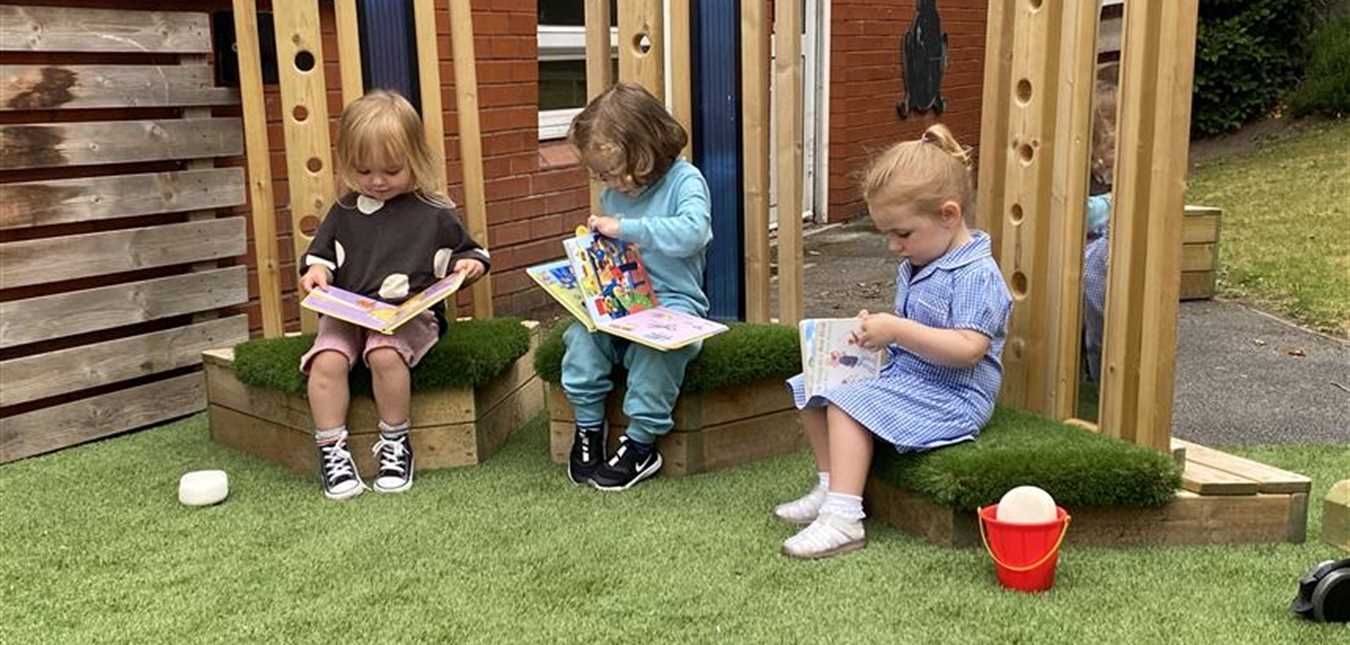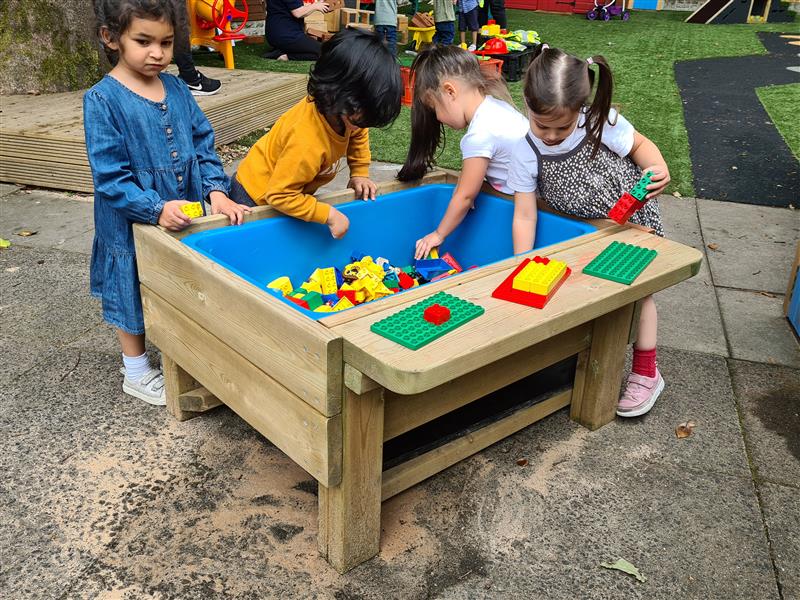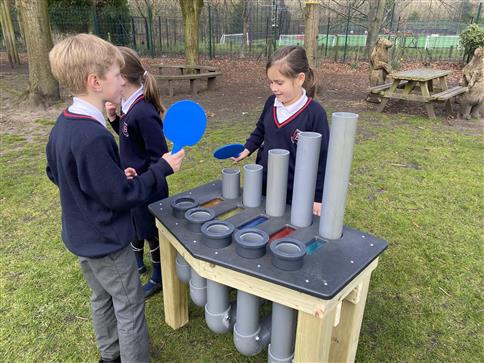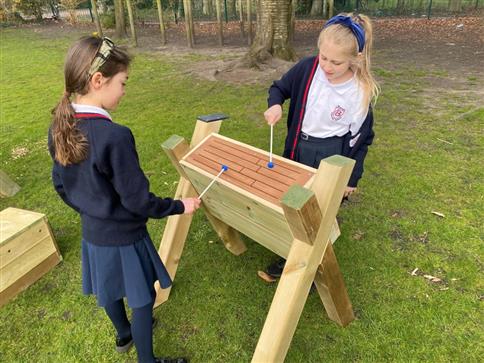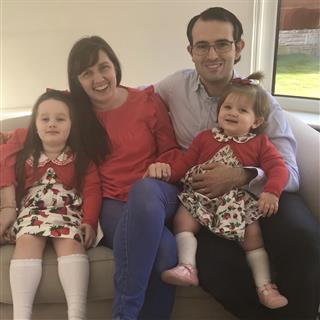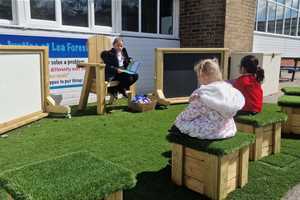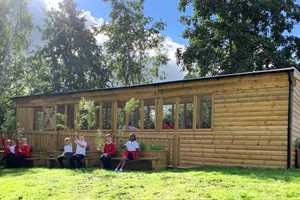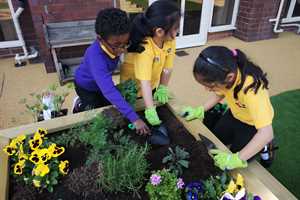
Outdoor Learning and Play
'Understanding the World’ is one of the seven areas of learning and development taught during EYFS
Young children make use of all of their senses to learn about the world around them. Through Jean Piaget’s research, we know that children are active learners who seek hands-on experience and can learn from trial-and-error approaches.
Early learning environments can have a positive impact on how children develop knowledge and understanding of the world. Environments which allow children to take risks, be creative and explore and investigate both indoors and outdoors can enhance young children’s early learning. Parental support where parents are actively involved and engaged in their child’s learning can also make a profound impact.
Learning through play and exploration helps young children to make connections and to build cooperation and positive relationships with their peers. Through play, children begin to link previous experiences and work out what will happen next. Pupils develop a knowledge and understanding of the world by fully interacting with it.
When toddlers learn to walk, they are keen to explore their environment, touch the grass, listen to the birds and conquer the slopes. Children use their own ideas and imagination to make sense of the world around them. When children are free to select resources and imitate roles and experiences from everyday life, they are able to explore sense and nonsense, reality and fiction whilst gaining an understanding of society and culture.
In order for children to understand the world they need plenty of opportunities for first-hand experiences so that they can make connections, re-enact and imagine. In the play, children respond to changing events and situations, they are able to adapt and think on their feet, often in fast-moving games and conversations.
‘Understanding the World’ can be a challenging area of learning and development to assess. It encompasses a wide range of topics and skills such as investigation, problem-solving, memory, nature, science, history, geography, thinking skills, emotional intelligence and understanding of cultural diversity.
Learning experiences should be meaningful, fun, varied and progressive with opportunities for both free play and adult-directed activities. Practitioners should respond to children’s interests by following their lead in the self-initiated play and there should be plenty of opportunities for pupils to repeat activities.
The remainder of this blog will focus on ideas and advice for teaching ‘Understanding the World’ too early years children.
Personal Experiences
Young children are naturally curious and begin to notice the characteristics and features of the places and spaces they encounter. The use of senses such as sight, sound and smell allow children to become familiar and make connections. As children grow, they begin to understand where they live and can talk about significant events that have happened to them since they were babies.
Every day trips to the local shops, café, grandparents’ house, place of worship or train station are full of interest and intrigue for children. They will begin to notice familiar features which indicate where they are.
Practitioners should provide opportunities for children to explore different surroundings. The outdoor environment allows pupils to explore different textures and surfaces such as grass, leaves, water and sand play. Careful observation will show practitioners' children’s interests:
- Do children spend their time moving up and down the hill?
- Drawing with chalk?
- Or making patterns in the sand?
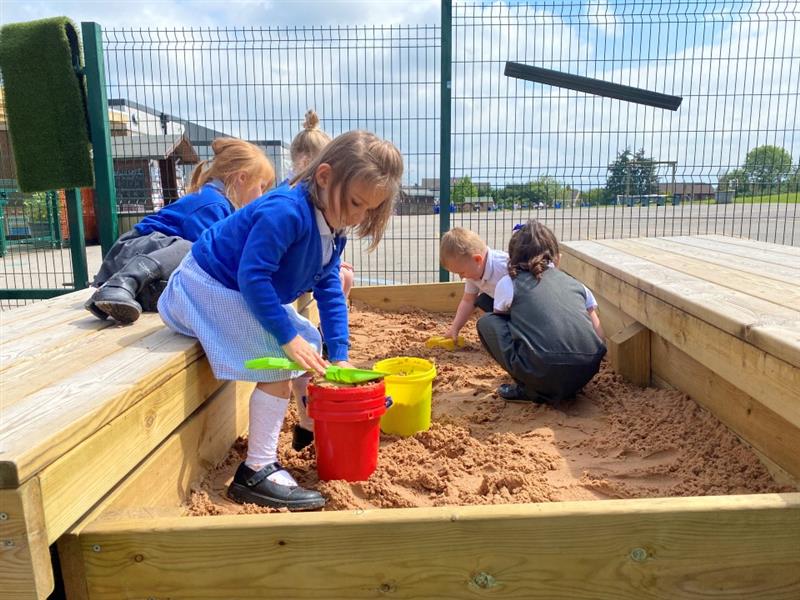
Access to natural living things such as insects, birds and plants allows children to hunt for bugs, plant seeds, collect natural items and bird watching.
Small-world toys help pupils to invent situations in their play. Playing with vehicles, tracks, tunnels, farm animals, rockets, spaceships and doll houses allows practitioners to listen to children at play and observe what they are doing. Adults can build on children’s developing ideas by explaining concepts, sharing stories and helping to link ideas through play. Songs and rhymes that link to things and animals children have seen in real life and in books such as ‘Old Macdonald Had a Farm and ‘Down at the Station' help to embed learning.
Inviting a range of different people including family members to come into school to talk to the children and share their skills such as a 'vet, nurse, or police officer’ can spark children’s interest and help them to learn about their community and the wider world.
Local trips to parks, farms or museums allow children to experience first-hand new places and meet new people. Pupils could make their own maps of their local environment, labelling significant points of interest such as road names, shops or post boxes.
Diverse World
Children’s play and exploration tend to focus on their immediate experiences and interactions with others. In order to understand and celebrate similarities and differences between cultures practitioners need to build on what children know about themselves. When learning about the world, children will draw on what they have heard or seen others do and begin to gain knowledge and understanding of different people and events.
Pupils will enjoy hearing stories about themselves, their families and other people. Through stories, children may become aware that they are alike but also different from others. Classroom resources should include children with different types of hair, glasses, mobility aids, disabilities, clothes, skins, religions and lifestyles in order to support children in developing an understanding of similarities and differences.
It is important for all children to recognise aspects of themselves in classroom resources and materials so that every child feels seen and included. Practitioners must talk to children about differences in gender, culture, language and disability. It may be useful to hold some ‘Show and Tell’ days where pupils bring in objects and photographs, speaking about their family and friends, likes and dislikes.
Resources and materials in the role-play area should connect directly to children’s first-hand experiences. Children can bring in empty food cartons and boxes from home to add to the class home corner/shop. Cooking utensils and items used in a mud kitchen should also reflect different cultures such as Turkish coffeepots, Chinese teapots, chopsticks, woks, tagines and spaghetti forks. There should be a variety of dress-up clothes available to all children including doctor’s coats, nurses’ uniforms, and police, paramedic and firefighter sets. Through role-play, children are able to recreate known events and express the feelings and emotions of other people and themselves. When children act out and express themselves, they explore feelings such as anger, sadness, happiness, shock and fear.
Music and movement both inside and outside can allow children to express themselves through dance. Pupils can learn about different cultures through music and dance such as Indian, Caribbean and Irish. Clothing and accessories that reflect different cultures such as series, henna or jewellery are interesting for children to observe and excellent discussion starters.
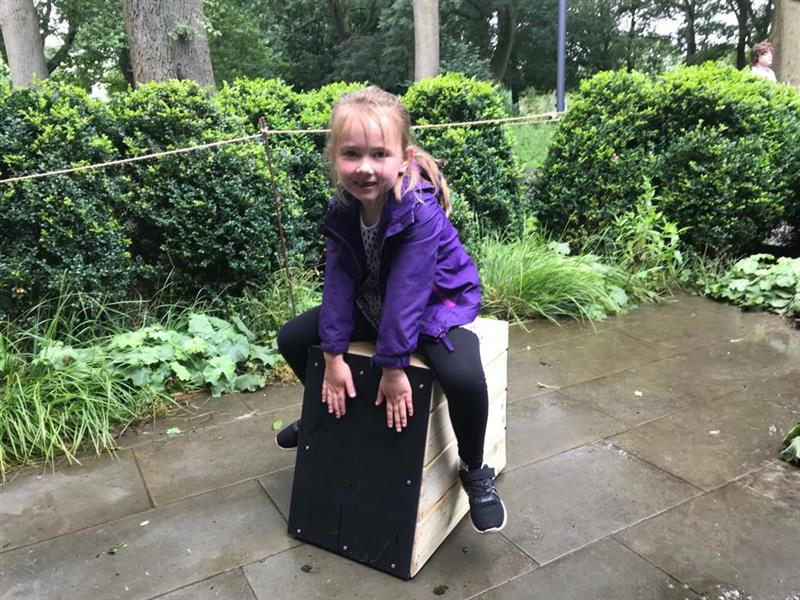
Local theatre groups and performers can be invited into school to introduce stories and songs from other cultures and practitioners may want to involve children in local community events such as choirs, fetes or open days. It is useful for children to feel actively involved in local community life, and to develop a sense of responsibility, care and respect by working together towards a shared goal.
Developing a sense of Time
Children often find the passing of time a difficult concept to understand. Schedules and routines are important for young children to show them what is going to happen next and where. Visual timetables can help pupils to understand the sequence of the day and pupils will enjoy being involved in daily tasks such as giving out a fruit snack or listening to a story before nap time.
Dolls, babies and teddies help young children to explore routines and imitate everyday activities as they learn to dress them, put them to bed or wash them. Songs and rhymes can support children’s understanding of time. ‘This is the way we wash our hands, ‘One Two, Buckle my Shoe and various tidy-up songs help to support everyday activities.
Birthdays can be talked about and celebrated and practitioners could plot children’s growth on a class chart.
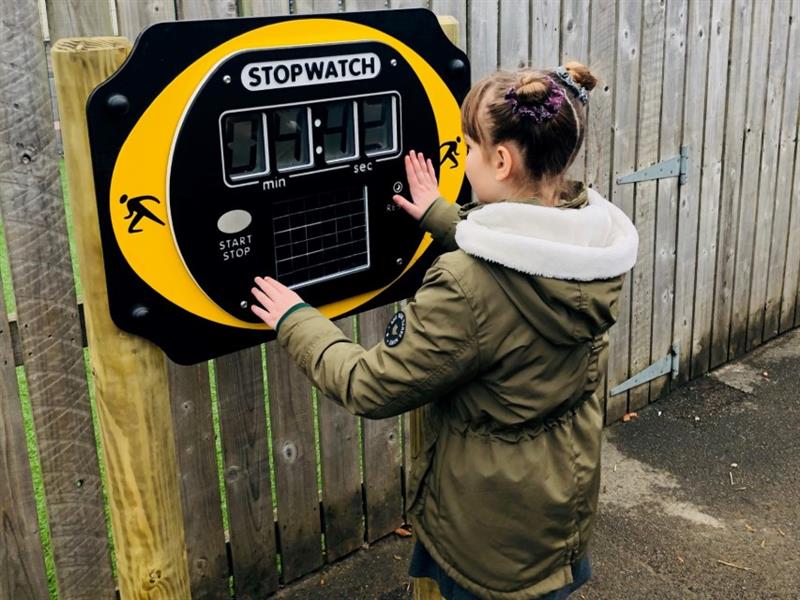
The natural environment plays a major role in supporting children’s development with the passing of time and how things change. Seasonal change should be observed and explored with pupils. Growing vegetables outside or cress on the windowsill will interest children and allows them to understand growth linked to time. Photographs can be taken of plants, flowers and vegetables at different stages of growth which can be discussed and ordered with pupils. When caring for wildlife and the natural world children develop an appreciation for nature and an understanding of how to live sustainable lives.
Animal change and growth can be observed by investigating frogspawn or watching butterflies emerge or chicks hatch. Pupils will be able to sequence the life cycles of these animals.
History can be taught to young children by observing old and new resources to find out about the people of the past. Old-fashioned toys and clothes can be compared to modern versions, helping children to understand what their grandparents or great grandparent may have worn or played with. A trip to a toy or transport museum can further support this area.
Exploring and Creating
The outdoor environment can help to stimulate active learning and exploration in babies and young children. Children will enjoy moving across a range of textures such as grass, sand, bark and stone. Magnifying glasses can be used to notice small details during walks and when collecting natural materials.
Pentagon’s range of musical instruments allows children to create new and interesting sounds in the outdoor environment. Listening to music from around the world such as Latin American salsa music or flamenco music from Spain can inspire pupils to sing and devise their own songs.
Toddlers show interest in things which they can build up, knock down, open and close. A variety of construction materials that can be joined and taken apart are essential for children to build with. Practitioners can talk to children about their designs, discussing the size, shape and positions of blocks.
Practitioners can encourage children to explore buildings around them and to talk about the purpose of the different construction materials. Pupils can use simple tools to fix and repair equipment in their environments such as a broken book or toy. During role-play, repairs can be carried out in the home corner.
Pupils also need resources which they can push and pull. Toy cars, trikes, bikes and pushchairs allow children to explore movement and direction. Pulling toys such as a dog or a train on a lead or pushing a boat down a ramp can help children to begin to understand forces.
Pupils working in the enveloping schema will enjoy filling, carrying and emptying a range of containers such as buckets, bags or trolleys.
Technology
In our ever-changing technological world pupils need to be aware and able to use different forms of technology. From a young age, children will engage with cause-and-effect toys where buttons are pressed or books where flaps are lifted. Activity boards with gears, switches, buttons and hinges allow children to manipulate objects and explore how they work.
Everyday technological items such as phones, radios, interactive clocks, ovens, hoovers, keyboards and tills can be incorporated into role play areas which help children to imitate life and understand how objects work.
Kitchen items such as spoons, whisks, rolling pins, pepper grinders and garlic presses can be added to kitchen or play dough areas to allow children to experiment with simple, real-life machinery.
Pupils can experience hands-on learning when taking their own pictures or videos with cameras or using Bee-Bot’s to program a set of instructions.
Practitioners can talk to children about technology in the wider world and demonstrate it in action when discussing traffic lights and pelican crossings on the racetrack. Pupils can experience ICT in their local environment by observing escalators, automatic doors, street lights and neon signs.
Product Spotlight
Children can often be very knowledgeable when talking about ICT and practitioners can provide stimulating and interesting programs to enhance learning.
‘Understanding the World,’ involves guiding children to make sense of the physical world and their own community. Personal experiences, a broad selection of resources and opportunities for play and active participation can help to enrich children’s understanding and widen their knowledge of the wonderful world they live in.



